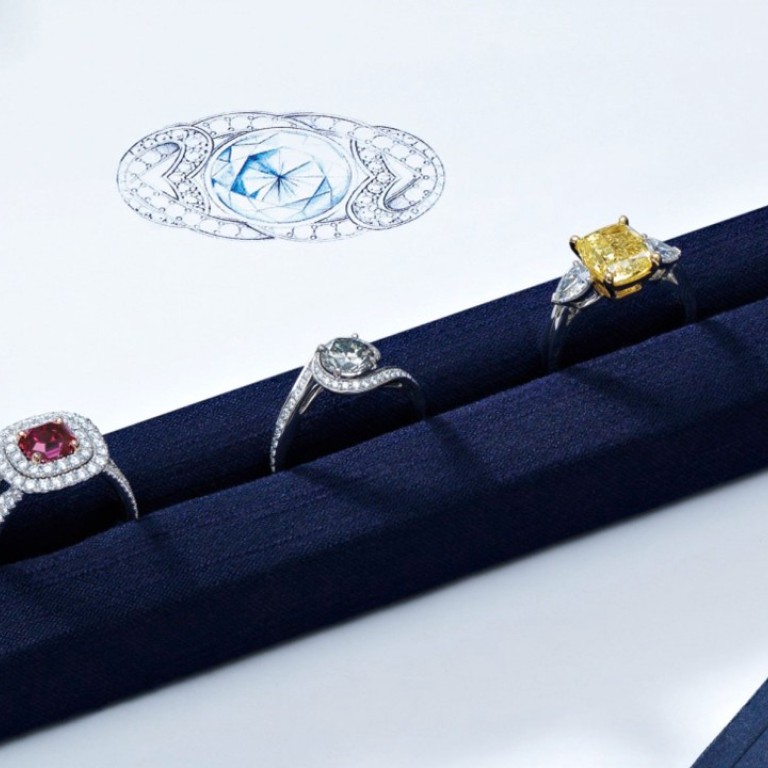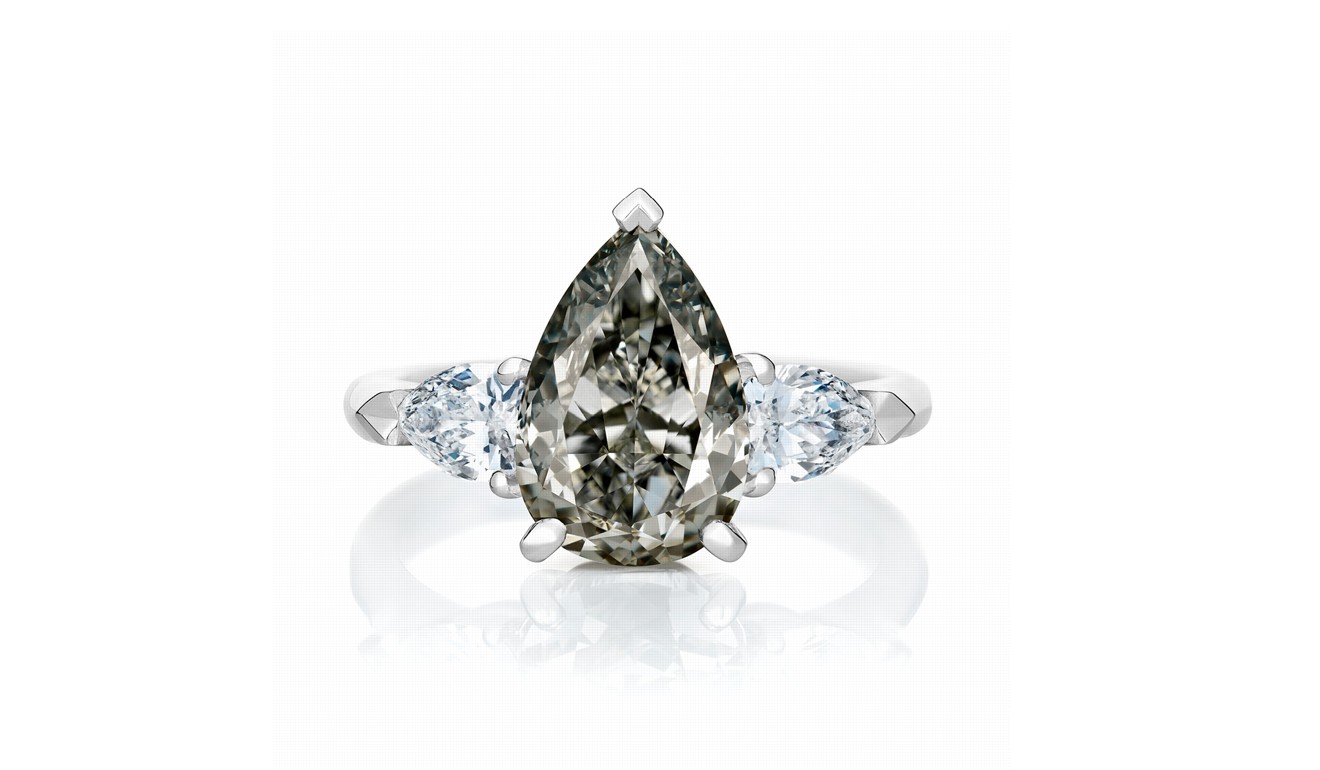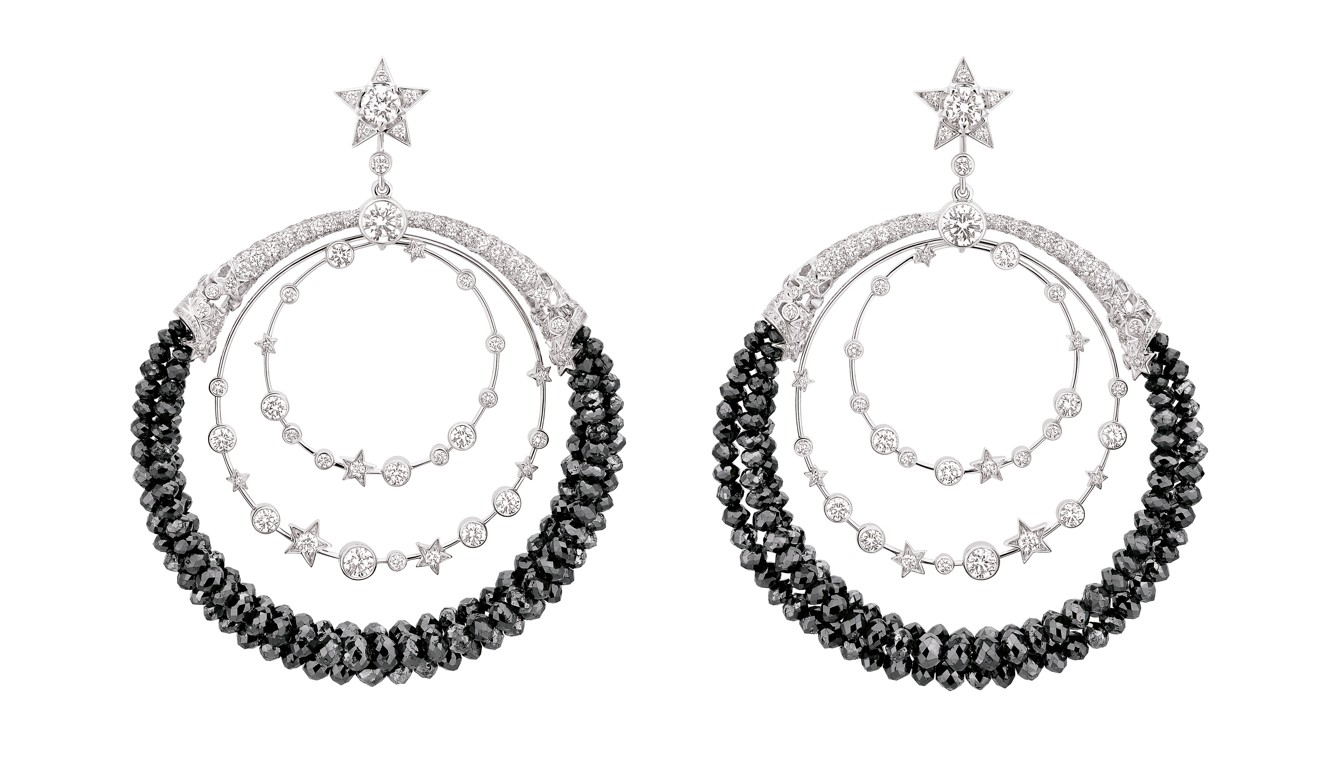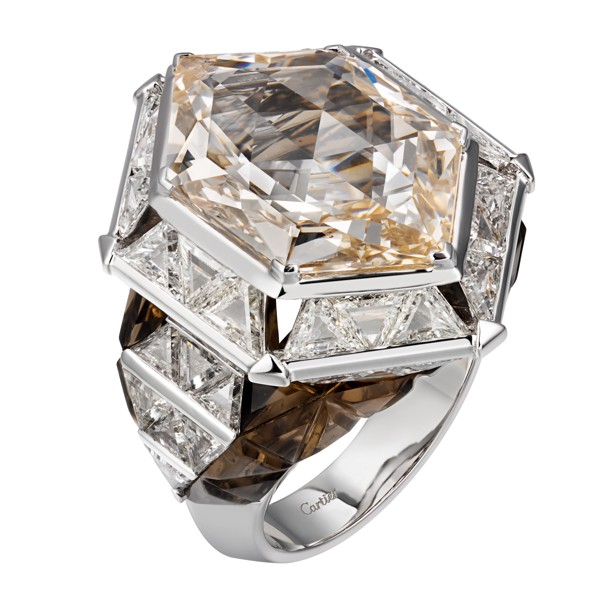Coloured diamonds are rare, but you don’t need to be a billionaire to buy them in Hong Kong

You don’t need to be a billionaire to own a fancy diamond, though the millions paid for large specimens in recent auctions might lead you to think so.
Fancy diamonds command a premium because of their rarity, but they also come in sizes small enough to be realistic acquisitions for most jewellery lovers. They are not investment pieces on the same scale as large pink, red, green or blue diamonds, but in finished jewellery they are a pleasure
to own.
Fictional and lead character Sex and the City Carrie Bradshaw was very excited when Mr Big gave her a black diamond engagement ring as something out of the ordinary. In white metal, and teamed with white diamonds, a black diamond is sensational. It is also a great choice for men’s jewellery.
Black solitaires have not always found favour in the Asian market, though jewellery in combinations of black and white pavé diamonds were a fashion statement, years ago.
In every specification except for the colour, which comes from graphite, black diamonds are the same as any other diamond. They are found mainly in Brazil and the Central African Republic. There are plenty of heat-treated black diamonds out there, retailing at around US$300 a carat. If you favour a natural fancy black diamond certified by the Gemological Institute of America (GIA) or another reputable body, you could pay around US$2,500 to US$3,000 per carat.

Brown diamonds are similar in price to black diamonds but much more fascinating in their range of colours. The price is influenced by the intensity of colour and also by secondary colours. This variability also means that different brown diamonds appeal to different people.

There is the pure dark brown, marketed as “chocolate”, the yellow- or pink-tinged brown marketed as “Champagne” and the orange-tinged brown marketed as “Cognac”. The brown colour ranges from pale, known as C1, to dark, the darkest known as C7. They are found in quantity in Australia, South Africa and Brazil. The secondary colour is important. For example, as pink is more rare than yellow, a secondary pink tone makes the brown diamond more expensive than a brown with a secondary yellow.
Equally fascinating in their diversity are grey diamonds. These beauties are not as well known as they should be as they are exquisite in all their range of shades – which is fortunate for current buyers as they are still affordable.

The colour saturation is very weak, so grey diamonds may take on a metallic blue hue, which is most alluring. Some have a violet tone, others a greenish or even greenish-yellow tone, with blue tones predominating. It is this coloration that can give the grey diamond a warm tone or a cool tone, creating a versatility prized by jewellery designers.

The same holds true for chameleon diamonds. These gems change colour from, say, olive green to yellow. No one knows exactly why these diamonds change colour, though a hydrogen-related defect could be the answer. The elements that determine the colour are not as readily identifiable as they are in non-changing fancy diamonds, and there are so few large chameleon diamonds to study that no conclusion has been reached.

Chopard’s 31.32ct oval-cut chameleon diamond is the largest documented stone in this category.
The chameleon effect is never seen in vivid or intense colour diamonds and the colour changes are only between green, yellow and brown. Two types of changes are seen. In the Classic chameleon, the colour changes in response to heat, then reverts gradually back to the original colour as the temperature cools.
The Reverse chameleon is sensitive to light, changing colour if stored in a dark place for a longish period of time. Exposure to light initiates a reversal to the original colour.
Most chameleons have at least two overtone colours but the main colour determines its desirability with green preferred, and the deeper the intensity of colour, the greater the value. The main colour is quite stable unless subject to heat, as in the Classic, or deprived of light, as in the Reverse. The colour it changes to, however, is not stable.
A chameleon diamond is not a party trick, or an instant novelty like a mood ring. But it is rare and prized by collectors, while many diamond buyers simply find the colours attractive. In the smaller sizes, they are affordable to the average jewellery buyer. They are also subject to the famous 4Cs, but US$5,000 could buy you a carat. A five-carat chameleon of high quality could cost you US$250,000. Whatever the colour of a diamond, no matter its size, always look for certification from GIA or other internationally recognised body.

Black, brown, chocolate and Champagne tones trending while colour-changing ‘chameleon’ stones are always a pleasure to own